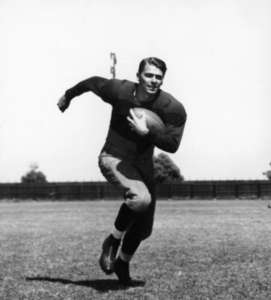Visionary Leaders: How Modern Eye Care Could Have Shaped History
The Sight of Our Leadership
When we think of leadership, vision is a word that often comes to mind – both in a metaphorical and a literal sense. Leaders need to ‘see’ the future, make informed decisions, and inspire others.
However, what if some of the greatest leaders in history were limited by their actual, physical vision? Let’s explore the vision problems of the iconic U.S. Presidents – Abraham Lincoln, Theodore Roosevelt, and Ronald Reagan – and imagine how modern eye care technologies, particularly LASIK, might have altered their experiences and capabilities.
Abraham Lincoln’s Struggle with Strabismus
Lincoln’s Vision Challenges
Abraham Lincoln, America’s 16th President, faced a vision challenge unbeknownst to many: strabismus. This condition, where the eyes do not align properly, can cause double vision and depth perception issues. Historically, it’s noted that Lincoln’s left eye tended to roll upward, especially when he was tired or excited. This condition might have affected not just his vision but potentially how he was perceived in public and private life.
The Hypothetical LASIK Solution
Imagine if Lincoln had access to modern treatments to correct his strabismus. Then imagine being able to get his vision corrected with a procedure like LASIK afterwards. Correcting his vision with a procedure might have not only improved his vision but also possibly altered his public image.
Theodore Roosevelt’s Vision Loss
Roosevelt’s Rough Rider Gaze
Theodore Roosevelt, an emblem of American vigor and the 26th President of the United States, faced a significant personal challenge: partial blindness in his left eye. This impairment, which was likely the result of a detached retina, was a consequence of his well-documented love for boxing and other physically demanding activities. A detached retina, if left untreated, can lead to complete vision loss, and in Roosevelt’s era, the medical technology to effectively treat such conditions was not available. This impairment was not just a minor inconvenience but a serious health concern that could have had profound effects on his life and presidency.
Could Modern Eye Care Have Helped?
Today, the advancements in medical technology, particularly in eye care, are astounding. Procedures like laser surgery or more advanced retina repair treatments could have offered Roosevelt, not just a temporary solution but a chance to fully restore his vision. Imagine if Roosevelt had access to these modern treatments. How would this have changed his experience as a president and an adventurer?
Ronald Reagan’s Myopia
Nearsightedness on the Gridiron and Beyond
Ronald Reagan, the 40th President of the United States, is often remembered for his charismatic leadership and contributions to international diplomacy. However, a lesser-known aspect of his life was his struggle with severe myopia. This condition, characterized by near-sightedness, significantly impacted his early life and career choices. His vision was so limited that it affected his performance in sports like football, where he reportedly could only see about a one-yard radius around him. This limitation led to various challenges, including being unexpectedly hit by the football during games due to his inability to see it approaching. Reagan’s myopia also played a role in limiting his military service during World War II, confining him to a desk job.

The Contact Lens Revolution
Ronald Reagan’s journey with vision correction is a fascinating reflection of the advancements in eye care technology. He was the first U.S. President to wear contact lenses, a significant step at the time. Initially, Reagan often chose not to correct his myopia, especially during his early acting career, due to concerns about his appearance. However, as he transitioned into politics, he began to embrace vision correction technologies. This section discusses how Reagan’s adaptation to contact lenses and subsequent vision correction choices mirror the evolution of eye care. It highlights how modern technologies like LASIK could have provided even more substantial improvements to his vision, potentially enhancing his quality of life and effectiveness in both acting and politics.
The Evolution of Vision Correction
From Spectacles to LASIK
The journey of vision correction is a remarkable tale of innovation and scientific advancement. From the invention of spectacles centuries ago to the cutting-edge LASIK surgery of today, each step in this evolution has significantly improved the lives of those with vision impairments. Let’s trace the history of vision correction, highlighting key milestones such as the creation of the first eyeglasses, the development of contact lenses, and the advent of laser eye surgery. It explores how these innovations have expanded the possibilities for individuals with vision problems, allowing them to experience the world more clearly than ever before.
Seeing the Future Clearly
By learning about the vision challenges of historical figures like Abraham Lincoln, Theodore Roosevelt, and Ronald Reagan, and imagining how modern eye care could have altered their experiences, we gain a deeper appreciation for the advancements in eye care. These stories serve as a reminder of the importance of taking care of our vision and the incredible potential of treatments like LASIK to improve our lives. The good news is that you don’t have to deal with the issues that these Presidents did!
